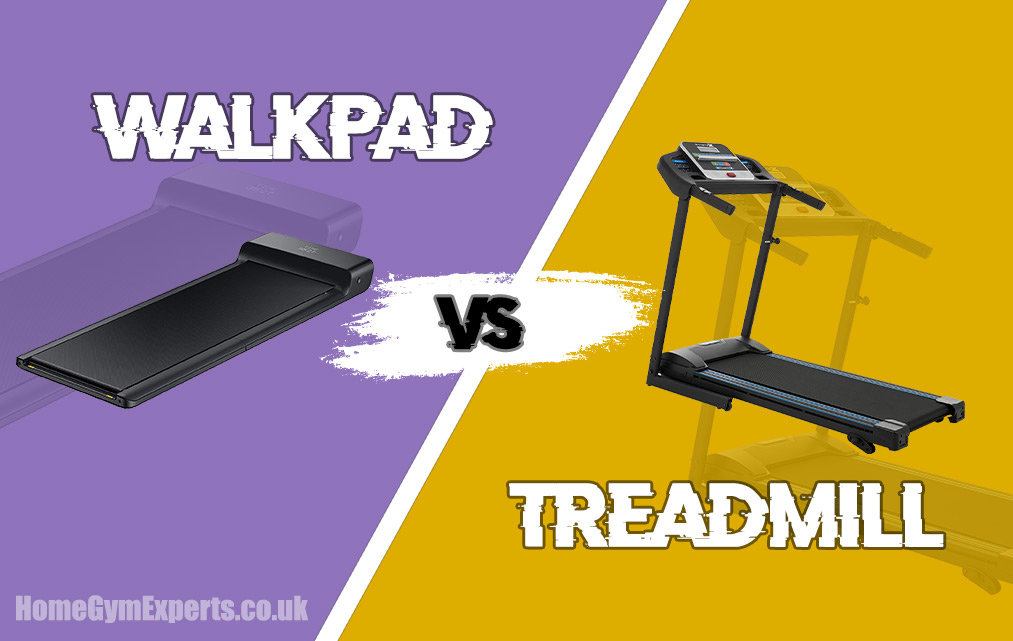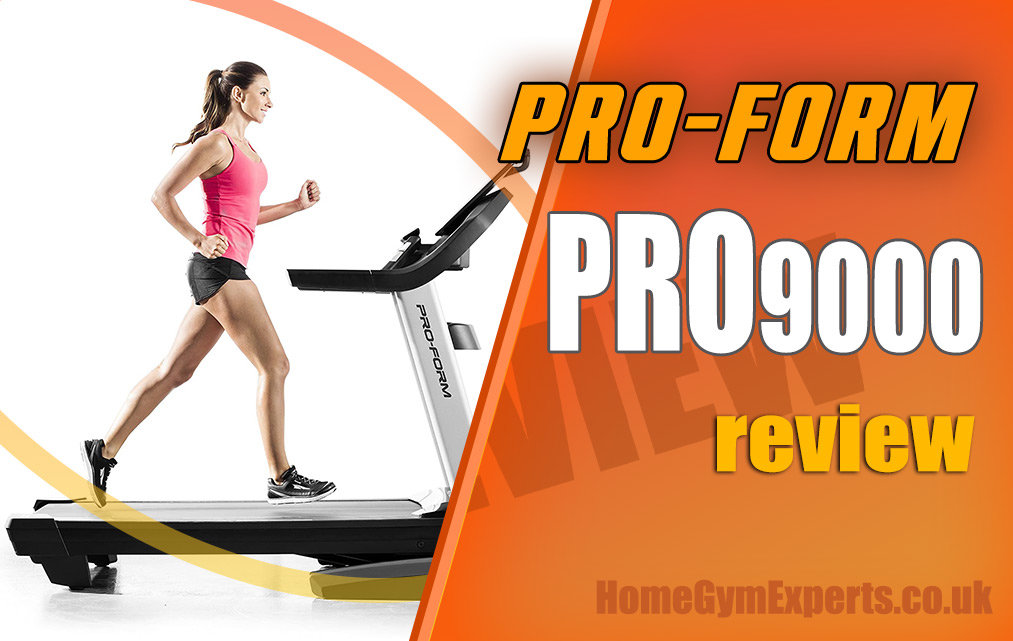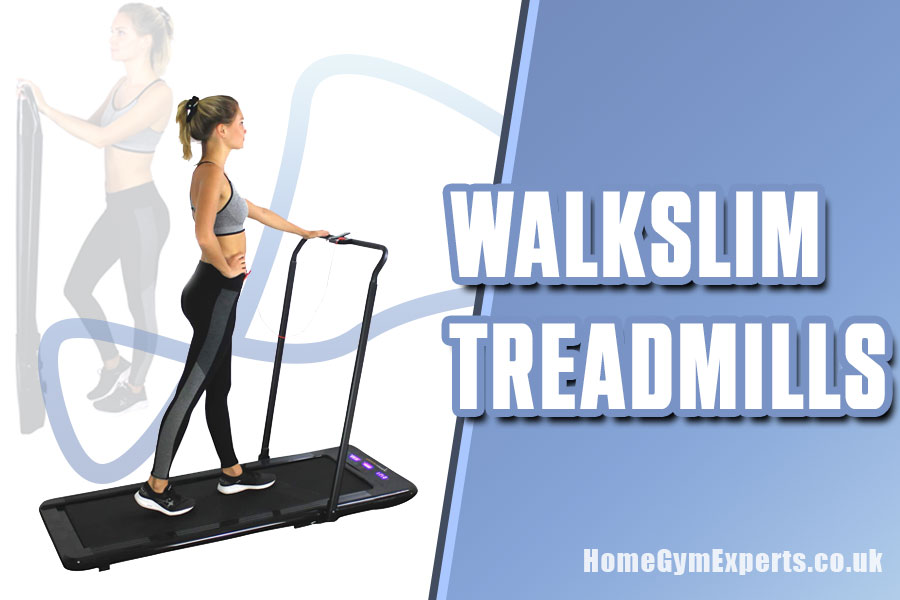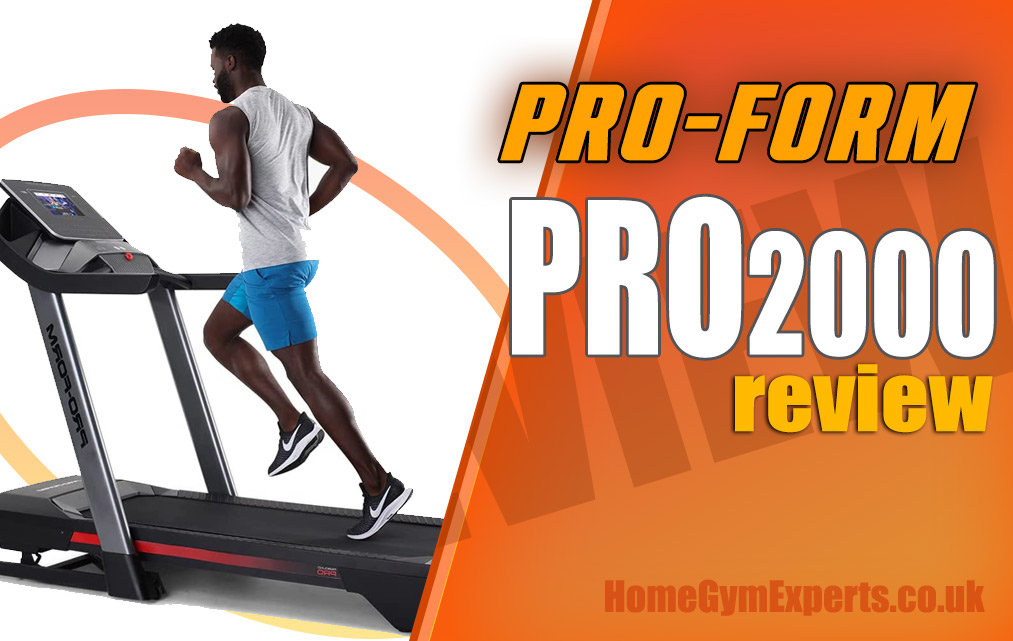The treadmill is one of the most accessible exercise machines because the controls are so easy to use and all of us know the mechanics of running.
However, there is a difference between knowing how to operate a treadmill and knowing how to use it efficiently. In this post, we are going to discuss the optimal speed for safe training and give some specific advice for different age groups.
Set your own running pace
One of the best things about owning a treadmill, especially if you’re new to running, is that you get to practice without an audience. I’ve written about the benefits of your own home gym vs commercial gyms and it’s never more true than learning to use a running machine.
How fast should you run on a treadmill?
There are a number of things to think about here including your experience, level of fitness and what your goals are. In general, a beginner should look to walk (1 – 2km/h) or go for a slow jog of (2km/h – 5km/h). More experienced runners can push it above those speeds and as long as they’re confident and have good running form.
The key is to start slow and build up as your confidence, physical strength and fitness grow.
Legendary runner Usain Bolt’s Top Speed is a whopping 27 miles per hour (43km\h)!
Related: What’s the best gym equipment to lose belly fat?
How fast should beginners run on a treadmill?

Whether it’s a new running machine you’re not familiar with yet, or you’re the one who’s new to this, getting the feel for treadmill running takes some practice. The old adage of ‘you have to walk before you can run’ is literally essential here.
Put the treadmill on the lowest speed, get familiar with its size, shape and motion and worry about running fast later on.
Trust me – if you’re new to running machines, even walking at a slow pace can feel like the strangest thing in the world.
- Master slow walking at a constant pace on the slowest setting.
- Move up to 3 km / h or less if you’re struggling.
- Next time, go for a fast walk.
- Hold onto the sides (if your treadmill has them!)
- Break into a fast walk
- When you feel you’re being pulled into a jog, keep hold of the rails and try it.
- When you’re comfortable with that (it will feel slightly weird) go for a really slow jog and get your balance.
Remember: Walk > Jog > Light Run
Our guide to the best treadmills for 2026
How to avoid injury on the treadmill
Are you cautious about using the treadmill because you are nervous about injuring yourself? Maybe you have hurt yourself in the past or have heard from others that it can be a tricky machine.
While people can sustain injuries on the treadmill, it is not how fast you run on your treadmill itself that causes this – it is improper use through poor running technique. The main areas at risk from improper running are our:
- knees
- shinbones
- feet
Which is better – elliptical or treadmill?
What are the dangers of running fast on a treadmill?
Stress fractures in the shinbones or in the feet can occur too. You are most at risk if you have a tendency to pound the treadmill while running at higher speeds because you are essentially smashing your body weight through your knees, shins and feet as you do this.
There are multiple delicate bones that can be injured by this, the most common of which are the tibial bones and metatarsal bones. These are found in the shins and in the mid-section of the foot.
It is important to perfect your running technique before upping your speed so that, when you do creep up the intensity, you can continue to run in a way that safely distributes your body weight. Watch some instructional videos and listen to running podcasts as a way of picking up tips.
The time this will take will be more than worth it for the benefits of avoiding pain and injury.
See also: Are Treadmills Bad For You?
Related Guides
- NordicTrack T 7.5 S Treadmill Review
- Bluefin Fitness Kick 2.0 Review
- Treadmill Horsepower Guide: What Size Motor Do I Need?
- Q2S Treadmill Review
- JLL S400 Folding Treadmill Review
How long should I run on the treadmill?
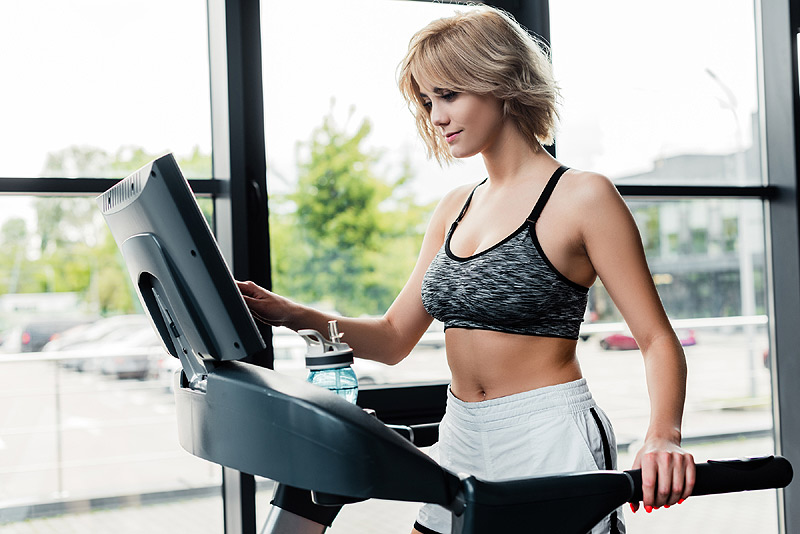
An effective workout is not measured by how long you spend on the treadmill, it is what you do during your session that counts. If you are doing a general workout, where the goal is to improve cardiovascular fitness and burn calories, then you should opt for interval training.
This involves pushing yourself to run faster for short sets, with active recovery jogging in-between. The benefits of interval training are that it provides an intense workout that can be tailored to your fitness levels and it can easily be changed up to keep things interesting.
Try this 30-minute treadmill interval workout
In a 30 minute session, you might try the following:
- 5 minute warm up
- 1 minute medium intensity effort with 1 minute recovery
- 2 minute medium intensity effort with 1 minute recovery (x2)
- 3 minute high intensity effort with 2 minute recovery
- 2 minute medium intensity effort with 1 minute recovery
- 2 minute medium intensity effort with 2 minute recovery
- 5 minute high intensity effort
- and end with a separate 5 minute cooldown.
This simple plan can be adjusted to suit your needs. Do not focus too much on the actual speed when planning your workout, go by how your body feels, but when you are performing it keep ‘medium’ and ‘high’ intensity roughly the same throughout.
How fast should you run when you’re older?
We have previously written a post about whether running is suitable for older people, Is running good for seniors? Short answer: yes, absolutely! Running is an activity that has no age limits, but there are a few things to keep in mind if you are an older runner.
The first is that if you have an age-related knee or joint condition, such as arthritis, then running might not be suitable for you because of the strain it puts on these areas. Low impact exercise like spinning or swimming are ways of getting a good cardio session without stressing your joints.
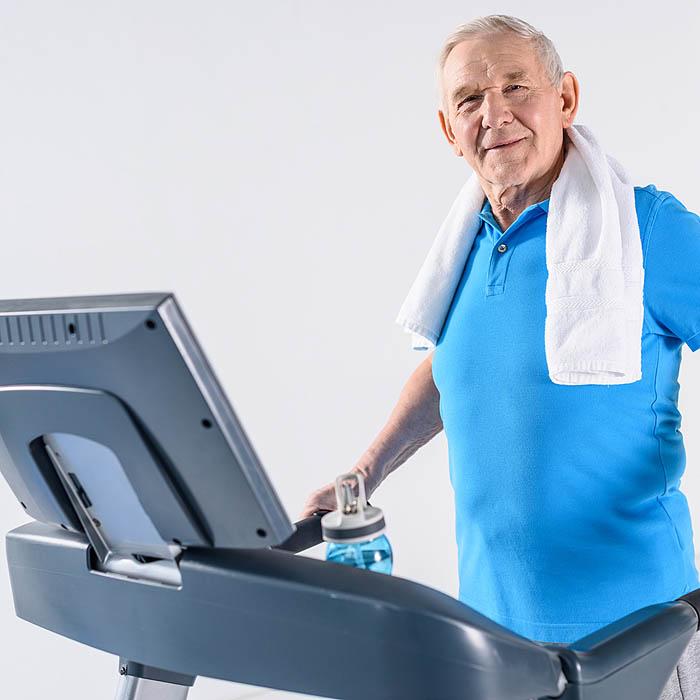
The second is that the body loses its ability to recover efficiently as we age, so start slowly and go carefully during your sessions.
Post-workout, aches and pains should not be so bad that they prohibit movement. To protect yourself, perfect your running technique before you attempt to turn up the speed, as already discussed.
Should you run slower if you’re a senior?
No: Older people are just as capable of reaching high speeds! Yes, the training programme leading up to those speeds might take longer, but there is no reason why a senior person cannot run at full throttle. Do not be held back by notions of being ‘past it’ (no such thing) or by fear of injury.
If the latter is worrying you, take active steps to protect yourself by investing in a good quality pair of running shoes and by wearing knee supports. These are advisable for all age groups, but seniors may get the most reassurance from such measures.
With all of this in mind, we encourage all of you – young and old – to hop on the treadmill and break into a gentle jog (remember, perfect that technique first!).
References & Further Reading
- How to oil a treadmill
- Find out more about human average and top running speeds here
- Journal of Strength and Conditioning Research – Heart Rate-Running Speed Index May Be an Efficient Method of Monitoring Endurance Training Adaptation
- ResearchGate – Factors Related to Top Running Speed and Economy
- NCBI – Effect of speed endurance training and reduced training volume on running economy and single muscle fiber adaptations in trained runners



